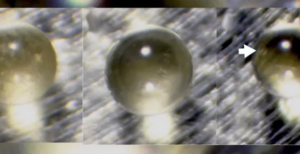Chinese researchers may have discovered billions of tons of water inside strange glass spheres buried on the moon, and they could be used as a future water source for moon bases, a new study suggests.
The tiny glass spherules, collected in lunar soil samples and brought to Earth by China’s Chang’e-5 mission in December 2020, could be so abundant that they store up to 330 billion tons (300 metric tons) of water across the moon’s surface, the new analysis, published March 28 in the journal Nature Geoscience, shows.
The glass spherules, also known as impact glasses or microtektites, form when meteorites smash into the moon at tens to hundreds of thousands of miles per hour, blasting chunks of lunar crust into the air. Inside these airborne plumes, silicate minerals heated to molten temperatures by the force of the impact combine to form tiny glass beads that are sprinkled like crumbs over the surrounding landscape.
World “population bomb” may never go off as feared, finds study
The moon’s soil contains oxygen, which means that the beads do too. When struck with ionized hydrogen atoms (protons) from solar wind, the oxygen in the molten spheres reacts to form water that is sucked inside the silicate capsules. Over time, some of the spheres become buried beneath lunar dust particles, known as regolith, and are trapped underground with the water still inside.
Read more: Live Science
Ask me anything
Explore related questions





